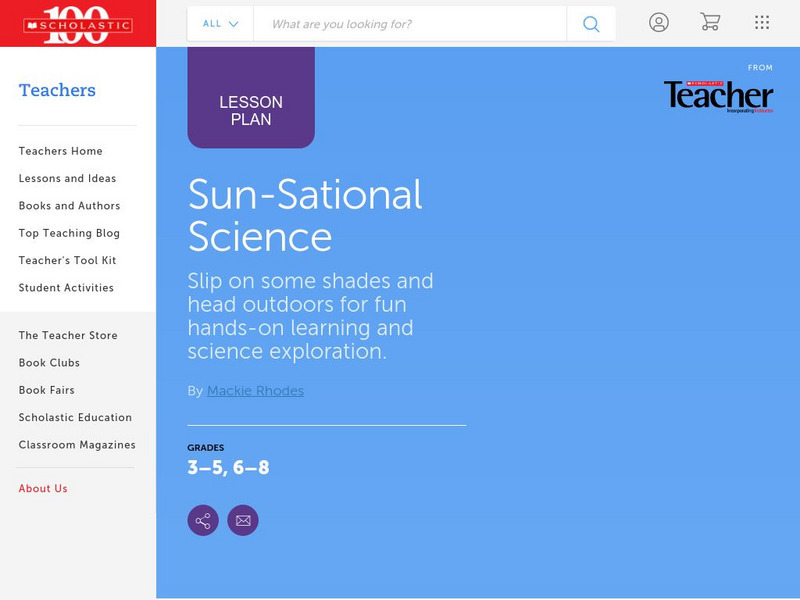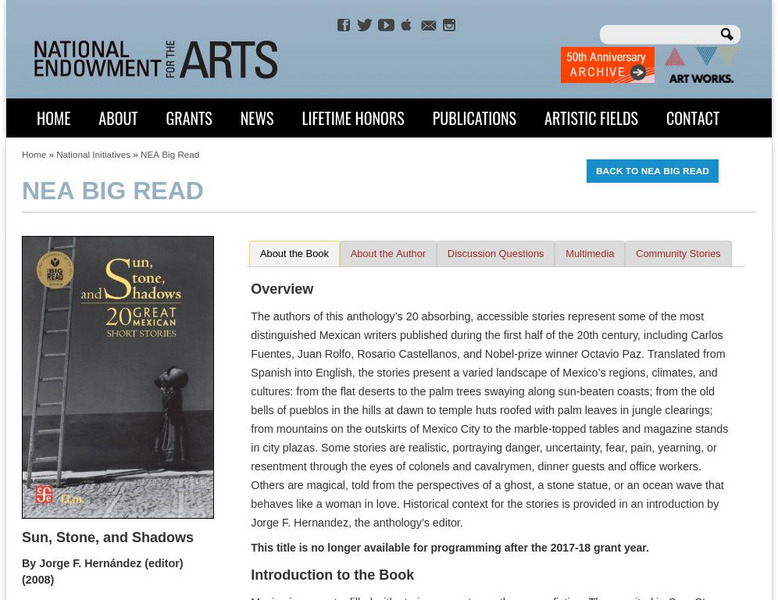Curated OER
How We See Things
Students explain that mirrors reflect light. They examine how when a beam of light is reflected from a surface, its direction changes.
Curated OER
Changing Circuits
Students participate in an online lesson to explain how to make bulbs brighter or dimmer in a series circuit by changing the number or type of components.
Curated OER
Weather Myths
Fourth graders relate myths to weather phenomenon. They write and illustrated a weather myth and present it to the class.
Curated OER
Plants Help Keep a House Cool!
Students experiment with tree shading and house colors to see how to reduce the temperature of a home.
Curated OER
Telling Time: Hours
Students participate in a discussion about the different types of timepieces and the energy sources necessary to run them. They observe the numbers on a clock and review the hands and what they mean and make individual clocks using a...
Curated OER
Variation
Students practice sorting living things into groups using their characteristics. Using pictures of leaves and animals, they sort them based on their color and shape and write the objects characteristics under the picture. They share...
Curated OER
Keeping Warm
Learners place words describing a range from cold to hot on a scale. Using those words, they identify places on Earth which are cold, hot, freezing or boiling. They practice using and reading a thermometer with three different beakers...
Curated OER
Moving and Growing
Students work with a partner to brainstorm a list of as many human body parts as possible. Using that list, they circle any one of those that are bones. They are shown a model of the human skeleton and practice locating various bones. ...
Curated OER
Keeping Healthy
Students review what the heart does and why the muscles in the body need oxygen. As a class, they measure their pulse rate while they are resting and after they have jogged for three minutes. They are helped by their teacher to convert...
Curated OER
Grouping and Changing Materials
Students feel and observe different types of materials. Using the internet, they sort objects based on the materials they are made from and justify their reasons for putting it in a certain category. They identify objects that could...
Curated OER
Using electricity
Students explore how a switch can be used to break a circut. Students construct a simple series circuit and use it for a purpose. Students read the "The Lighthouse Keeper's Lunch,or one of the "Katie Morag" stories which clearly shows...
Curated OER
Helping plants grow well
Students explore the effect of water, temperature and light on plant growth. Students are asked if they remember the LAW for plants. This is Light, Air(temperature) and Water, which all plants need for growth. Students are divided...
Curated OER
Life cycles
Students identify and explain the parts of a flower and their role in the life cycle of flowering plants, including pollination, seed dispersal, and germination. Students recap the following information: that plants need light, warmth,...
Curated OER
Changing Sounds
Learners identify how the pitch of an instrument can be altered. They complete a worksheet by labeling several images in order of pitch and then fill a bottle with water to create a sound that matches a pitch on a drawn card.
Curated OER
Gases Around Us
Students participate in a whole class discussion about solids, liquids, and gases. Students get involved in a teacher-directed experiment related to solids, liquids, and gases. Students complete worksheet, writing the names of the parts...
Curated OER
Changing State
Students identify the changing states of water, water vapor and ice in the water cycle They investigate how each of these stages can be reversible. Students complete a worksheet describing the water cycle.
Curated OER
Circuits And Conductors
Students predict the common classroom items, such as paper clips, chalk, keys, or erasers, that will be good conductors in a circuit. They build circuits using a variety of circuit diagrams to test their predictions.
Curated OER
A Thoreau Look at Our Environment
Sixth graders write journal entries o school site at least once during each season, including sketched and written observations of present environment. They can use sample topographical maps and student's own maps. Students can use...
Curated OER
Teeth and Eating
Students explore animal diets and teeth. In this animal science lesson, students view photos of animals and their teeth. Students identify the type of diet the animal has based on the teeth. Students are introduced to the terms...
Curated OER
Exploration of the Moon
In this moon worksheet, high schoolers review the Clementine exploration of the Earth's moon. This worksheet has 8 matching and 14 true or false questions.
PBS
Pbs Learning Media: Shifting Shadows
Why does your shadow move throughout the day? Watch this PEEP video [1:27] to understand how the sun's movement causes our shadow to change direction, shape, and size. Also included are teaching tips and how to conduct your own chalk...
PBS
Pbs Learning Media: Shadow Shape Game
Play with PEEP to explore how shadows change when the position of light changes. Detailed teaching tips are included as well as additional shadow activities for the students.
Scholastic
Scholastic Instructor: Sun Sational Science
Discover more about the sun when you visit this educational resource. The content of this site includes solar fun facts, experiments, and activities.
National Endowment for the Arts
National Endowment for the Arts: The Big Read: Sun, Stone, and Shadows
Resource provides a description, questions, essay topics, lesson plans, biographies, and notes guide a reading of Sun, Stone, and , Shadows, a compilation of short stories by twentieth-century Mexican authors Juan Rulfo, Octavio Paz,...
Other popular searches
- Science Sun and Shadows
- Sun and Shadows Flashlight
- Sun Shadows Time
- The Sun and Shadows
- Shadows and Sun






















